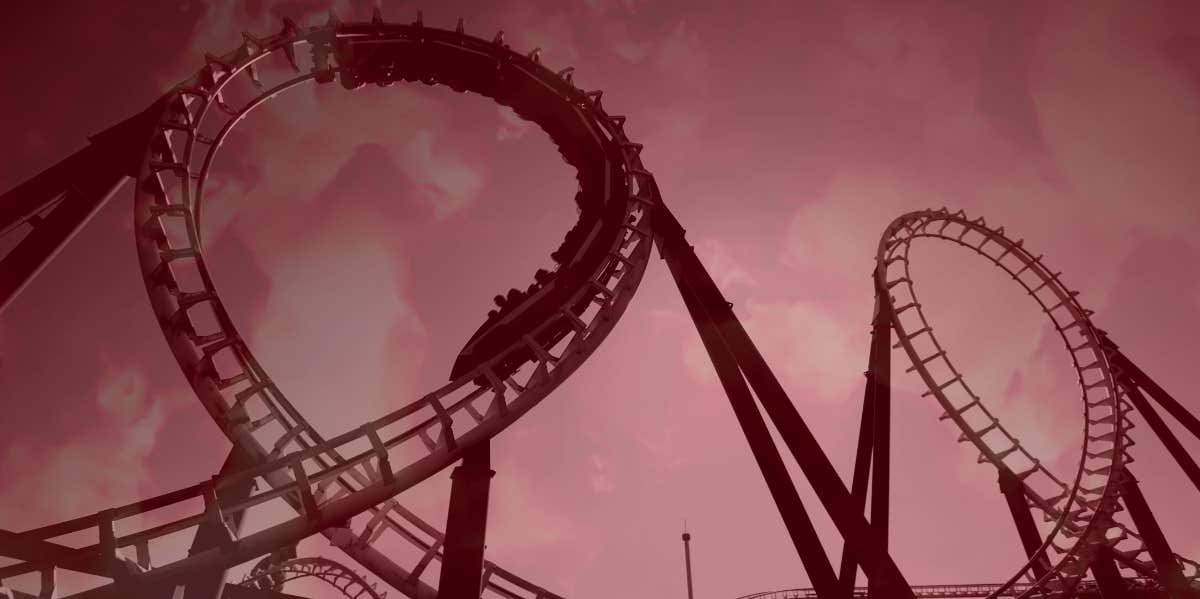The One Roller Coaster In The World That You Can Only Ride Once
It's the last ride of your life.
 Jupiterimages, Anneleven via Canva
Jupiterimages, Anneleven via Canva Though the can seem life-threatening when you’re barreling down an incline at a high rate of speed, roller coasters at your local theme park are pretty safe. There are only around nine serious injuries or fatalities for every million roller coast riders.
But what if there was a roller coaster specifically designed to be unsafe?
Back in 1999, Dr. Kevorkian, known as the "suicide doctor" was found guilty of second degree murder in the death of a man named Thomas Youk, a 52-year-old resident of New York afflicted with amyotrophic lateral sclerosis.
Kevorkian was the most visible proponent of assisted suicide for terminally ill patients. Since then, many states have rolled out "Death with Dignity" options for patients who are facing death.
In 2010, a Lithuanian man named Julijonas Urbonas, at the time a PhD student from the Royal College of Art in London, came up with his own unique end-of-life option for helping patients stop their pain and suffering.
He drew up plans for a death machine, designed to "humanely with elegance and euphoria" take the life of a person called the "euthanasia coaster."
What is the euthanasia coaster?
The euthanasia coaster is a hypothetical ultimate roller coaster engineered to assist in ending the life of a human being who is staring death in the eyes and wants to go out on a high note.
The steel machine was conceptualized in a layout that featured a lift to take riders 1,600 feet up within a few minutes. That would make it the highest roller coaster in the world, beating out the Kingda Ka at Six Flags in Jackson, New Jersey at 456 feet high.
Passengers would drop from the sky at a speed of 220 mph before entering a series of seven inversions, where riders spiral through loops turning upside-down over and over. Those circular loops would get smaller as each one is passed.
This would help the roller coaster maintain a lethal G-force for human bodies of 10 over a 60-second time frame as the train slows down, causing them to develop several G-force-related symptoms.
Finally, the euthanasia coaster would make a sharp right turn before entering a straight path and stopping. There, amusement park employees would offload the deceased and replace them with new passengers ready to take their last ride.
TikToker Luke Davidson shared where he detailed some of the facts about the euthanasia coaster.
According to Davidson, the ride can hold up to 24 passengers. Upon arriving at the top, if the passengers get cold feet, they have an opportunity to go back down and forego the ride.
Next, every single rider has to press an individual button to start the roller coaster. This would ensure opt-in and, once again, give them a chance to back out.
The euthanasia coaster would end its riders’ lives by exposing them to prolonged cerebral hypoxia, a lack of oxygen to the brain.
During the elevated G-force, passengers would experience gray out, a loss of sight that starts with tunnel vision and graduates to a perceived dimming of light, and a loss of their peripheral vision.
Eventually, they would pass out, resulting in a loss of consciousness and eventually ending in the voluntary death of the passenger.
Is the euthanasia coaster real?
No, the euthanasia coaster is not real — it is simply hypothetical.
There has never been a scale model of the euthanasia coaster built. But Urbonas’ concept caught the attention of the world when it was displayed at the Science Gallery in Dublin from April to June 2011.
In 2013, the project received the Public Prize of New Technological Art of Update and was displayed at the Centre de Cultura Contemporània de Barcelona in 2015.
Can you survive the euthanasia coaster?
The euthanasia coaster is specially designed to kill those that ride it, so the probability of surviving close to 0%.
However, Urbonas put some options into place on the unlikely possibility that there were survivors. Those riders would be subjected to additional inversions or another ride on the roller coaster of death.
NyRee Ausler is a writer from Seattle, Washington, and author of seven books. She covers lifestyle and entertainment and news, as well as navigating the workplace and social issues.
